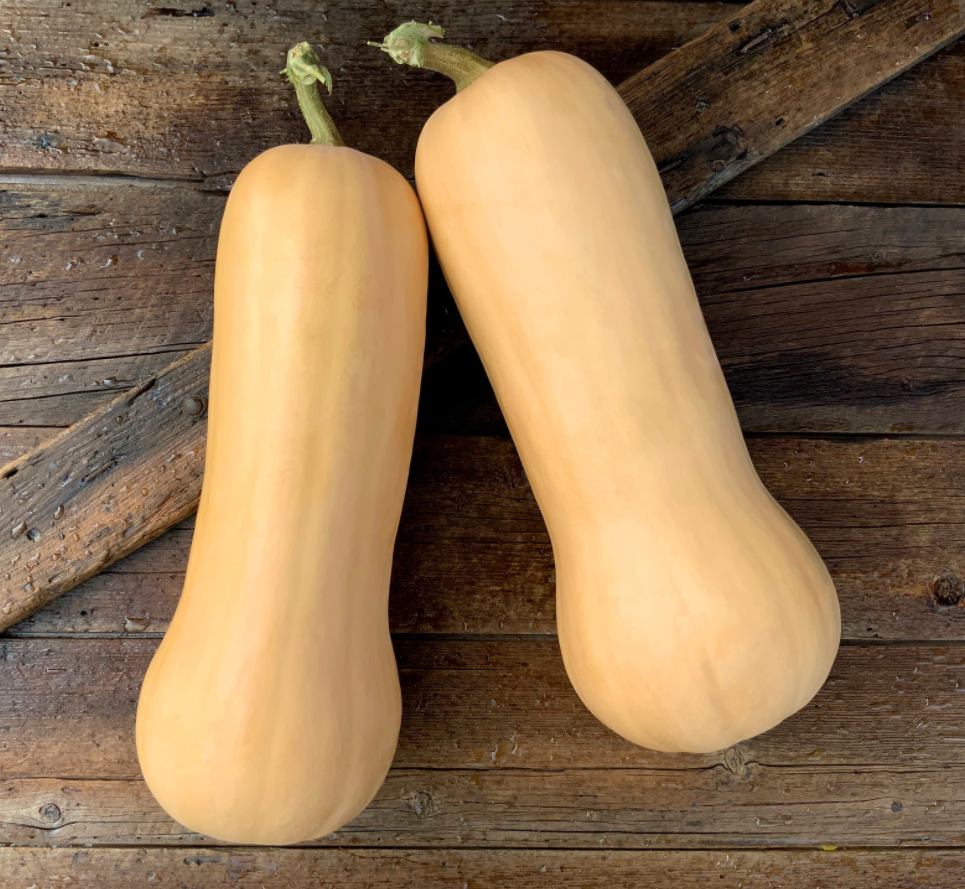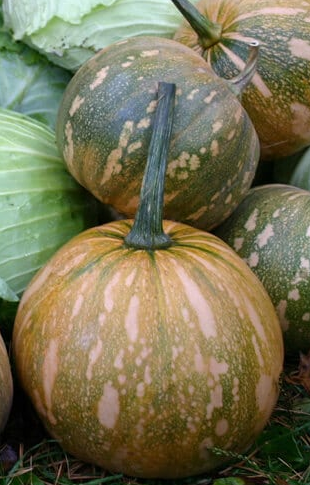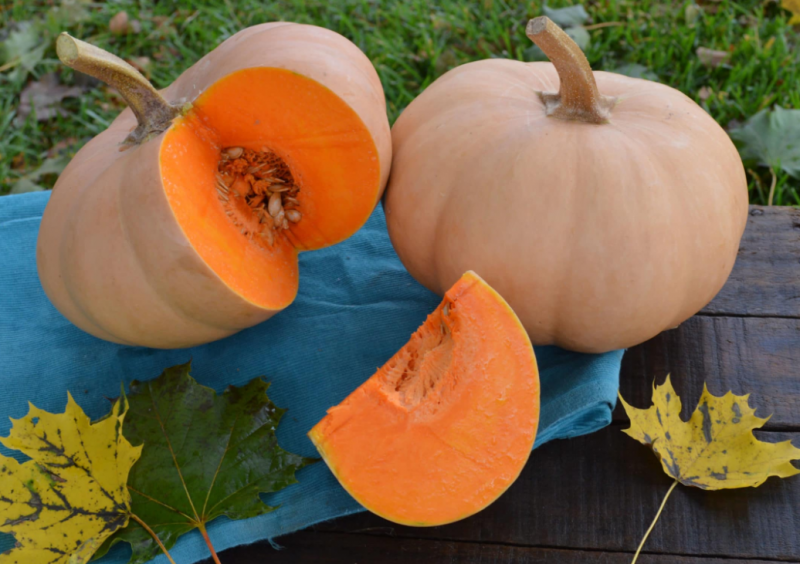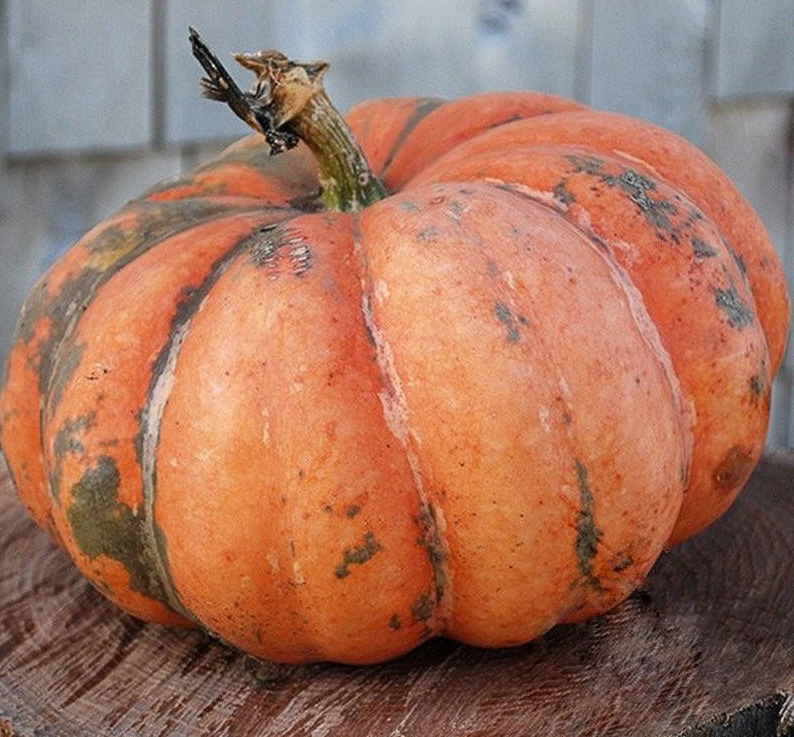We are nearly at the end of our planting window to grow pumpkins before Halloween, but certainly have plenty of time to produce winter squash before Thanksgiving. With that said you shouldn’t run out and plant pumpkins without reading this primer. Standard carving type pumpkins are notoriously hard to grow in North Florida. They are often plagued with several diseases such as powdery mildew, downy mildew, and anthracnose, to name a few. They can also be damaged severely by several insect pests such as melon worm and whiteflies, and also the virus diseases whiteflies transmit. When I’m contacted by producers interested in pumpkins, I make sure they know what they’re getting into first. They can be produced here, we do it every year here at the North Florida Research and Education Center, but it takes an intensive scouting and pest management program, which can be costly and often make the crop an economic loss regardless of successful production.
When people think about pumpkins, they are most commonly referring to jack-o’-lantern types (Figure 1) that are typically carved at Halloween, or pie type pumpkins used in baking around Thanksgiving. Both types belong to the species Cucurbita pepo, but are the most difficult to produce in this region from a pest management perspective.

Figure 1. Traditional Cucurbita pepo carving type pumpkin Credit: Seedway
–
Another type of cucurbit that is typically produced in the late summer or early fall is winter squash. There is tremendous diversity in fruit size, shape, and color within this group, but the most commonly known members are butternut (Figure 2), acorn, and spaghetti squash. These varieties belong to the species Cucurbita moschata and are generally much more resistant to diseases than members of Cucurbita pepo.

Figure 2. Butternut squash in the Cucurbita moschata family. Credit: Seedway
–
Calabaza (Figure 3) or tropical pumpkins also belong to Cucurbita moschata. The skin of these fruits become hard after curing, which allows them to be stored for long periods. Nearly all members of this family have bright orange flesh and are generally very palatable.

Figure 3. Calabaza tropical pumpkin Credit: Seedway
–
There are also varieties within this family that have shape similar to jack o’lanterns, but have a tan skin color (Figure 4). If there is a downside to these varieties, it is that they do not typically satisfy the desire of consumers looking for carving pumpkins, but can be displayed around Halloween and will generally last until after Thanksgiving.

Figure 4. Winter Squash within the species Cucurbita moschata with a more typical pumpkin shape Credit: Seedway
–
A third type of cucurbit is also available that may be appealing for production in this market segment, members of the species Cucurbita maxima. Many consumers will recognize these as the large, lobed, “pumpkins” sold during the fall that have a diversity of colors such as grey, orange (Figure 5), blue, green, tan, and even pale pink. Some varieties like Blue Hubbard can be used for baking, but most are used for decoration between Halloween and Thanksgiving. Like the winter squash, varieties of Cucurbita maxima are generally more resistant to diseases than varieties of Cucurbita pepo.

Figure 5. Winter squash within the species Cucurbita maxima Credit: Stokes Seed
–
Though varieties within the Cucurbita moshcata, and Cucurbita maxima are generally more resistant to diseases, they are not immune, and must still be scouted for insects and diseases, which could reach damaging levels. In my experience, North Florida producers are often more successful with these types of winter squash than they are with traditional carving type pumpkin varieties within the Cucurbita pepo family. Guidelines for production of pumpkins and other winter squash can be found in the Vegetable Production Handbook of Florida at the link below.
Chapter 7. Cucurbit Production
- NFREC Faculty Tribute to Arnie Forrester - February 11, 2022
- Tomato Varieties for 2022 - January 28, 2022
- Pumpkin Production in North Florida - July 30, 2021
